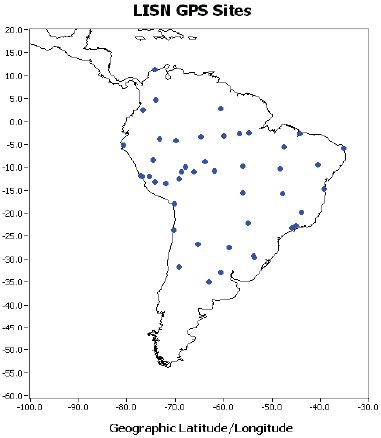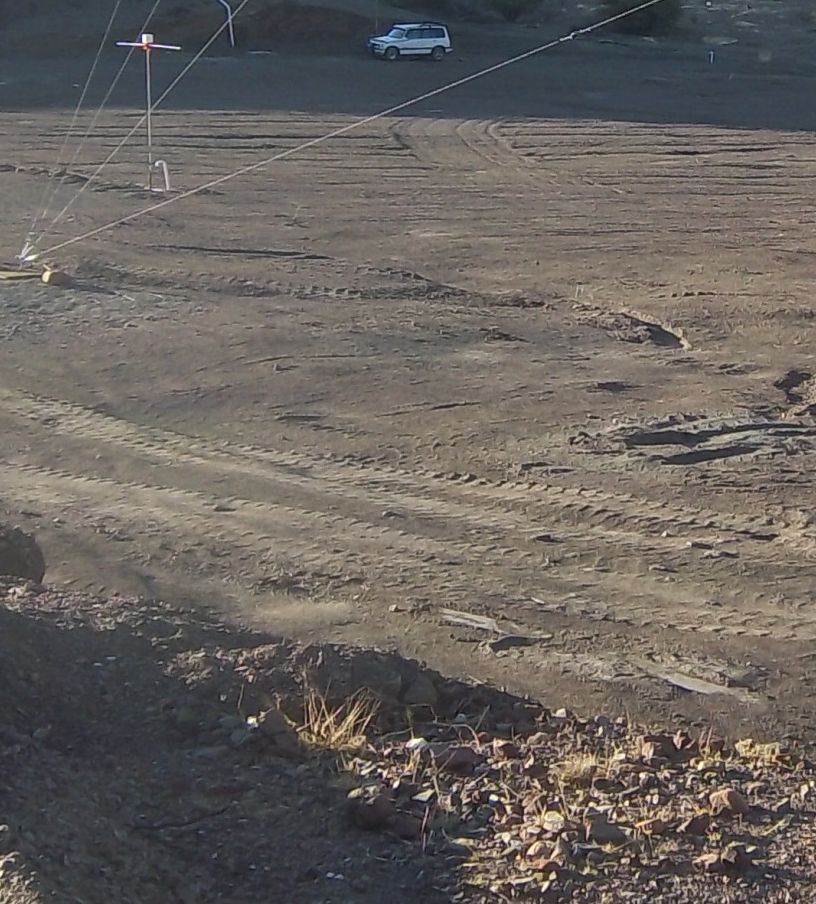Low-latitude Ionosphere Sensor Network (LISN)
Distributed Observatory
PI: Dr. Cesar Valladeres (University of Texas Dallas) United States
LISN is a distributed observatory dedicated to monitor and specify the conditions of the equatorial
and low-latitude ionosphere over South America. LISN was designed to conduct studies of the low–
latitude ionosphere over South America and to provide a nowcast and then, using data ingestion
techniques, provide a forecast of the background ionosphere and the formation of irregularities and
scintillations. LISN presently manages 47 GPS receivers, 5 magnetometers and
2 vertical incidence
pulsed ionospheric radar (VIPIR) ionosondes.

The LISN GPS receivers were installed across the South American continent as shown in the map at left.
The flux-gate tri-axis magnetometers were installed forming 2 latitudinal baselines. One baseline was placed at 690 W (Puerto Maldonado–Leticia– El Leoncito) and the other at 560 W (Alta Floresta–Cuiaba). By combining magnetic field measurements from one magnetometer placed near the magnetic equator and the other ~60 away from the equator it is possible to derive the zonal electric field. These derived electric fields augment current observations in the Peruvian sector (Jicamarca–Piura), and allow us to directly measure both the longitudinal and the dayto- day variability of the E fields.

Figure 1. Antenna Field of the VIPIR ionosonde installed at Tupiza in Bolivia
The first of the LISN VIPIRs was installed at Puerto Maldonado, Peru located near the magnetic equator and about 800 km to the east of the Jicamarca site. The second VIPIR was installed at Tupiza in Bolivia in November 2012 (see Figure 1). The location of the Tupiza VIPIR is 11° south of the magnetic equator. In addition, the magnetic field line that crosses the E-region over Tupiza maps to 300 km altitude at the magnetic equator and near the location of the Puerto Maldonado’s VIPIR. Two more VIPIR ionosondes will be deployed, one at Tucuman, Argentina and the other at Sao Gabriel, Brazil in May and October 2014 respectively.
LISN measurements are presently used to understand the day-to-day variability of the low-latitude ionosphere that is measured with the GPS receivers, magnetometers and VIPIRs.
Low-latitude Ionosphere Sensor Network (LISN) Observatory Home Page